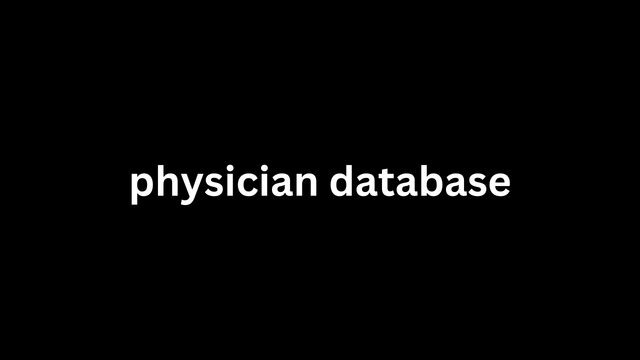Optimizing images
Posted: Wed Dec 04, 2024 8:04 am
Optimizing images, reducing server response times, and leveraging browser caching are all ways to improve website speed. Mobile Optimization: With the increasing use of smartphones and tablets, having a mobile-friendly website is no longer optional. Google has shifted to mobile-first indexing, meaning it evaluates the mobile version of a website before its desktop version. Ensuring that your website is responsive and provides a seamless experience across devices is critical for SEO. Ease of Navigation: A website that is easy to navigate ensures that users can quickly find the information they’re looking for.
Clear menus, intuitive design, and an organized site structure improve user physician database engagement and reduce bounce rates, both of which are important for SEO. User-Engaging Elements: Features such as call-to-action buttons, videos, and interactive content can enhance the user experience and keep visitors engaged. The longer users stay on a website and interact with its content, the more likely it is that the website will rank higher in search results. Incorporating these UX elements not only helps businesses rank higher but also ensures that users have a positive experience, increasing the likelihood of conversions and customer retention.

Building Authority through Backlinks Backlinks, also known as inbound links, are a fundamental component of off-page SEO. When other reputable websites link to your content, it signals to search engines that your website is credible, authoritative, and trustworthy. Google uses backlinks as one of its primary ranking factors, with the quality and quantity of backlinks affecting a website’s overall SEO performance. For digital businesses looking to scale, building a diverse and robust backlink profile is essential.
Clear menus, intuitive design, and an organized site structure improve user physician database engagement and reduce bounce rates, both of which are important for SEO. User-Engaging Elements: Features such as call-to-action buttons, videos, and interactive content can enhance the user experience and keep visitors engaged. The longer users stay on a website and interact with its content, the more likely it is that the website will rank higher in search results. Incorporating these UX elements not only helps businesses rank higher but also ensures that users have a positive experience, increasing the likelihood of conversions and customer retention.

Building Authority through Backlinks Backlinks, also known as inbound links, are a fundamental component of off-page SEO. When other reputable websites link to your content, it signals to search engines that your website is credible, authoritative, and trustworthy. Google uses backlinks as one of its primary ranking factors, with the quality and quantity of backlinks affecting a website’s overall SEO performance. For digital businesses looking to scale, building a diverse and robust backlink profile is essential.